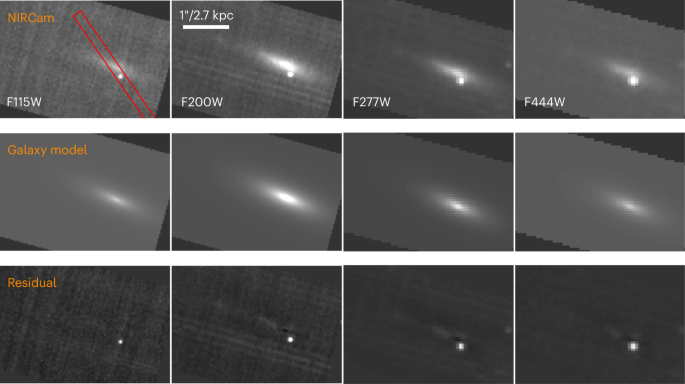In a groundbreaking study, astronomers utilized the James Webb Space Telescope (JWST) to capture detailed observations of GRB 221009A, a gamma-ray burst (GRB) and its host galaxy. Conducted on April 22, 2023, the imaging and spectroscopic analysis revealed the GRB’s precise characteristics and its interaction with the surrounding environment. By employing various filters and advanced modeling techniques, researchers successfully isolated the GRB’s light from its host galaxy, providing insights into its luminosity across different wavelengths.
The study also included late-time NIRSpec observations, which offered a comprehensive spectral view of the GRB and its host galaxy, highlighting the substantial contribution of the host galaxy to the observed signal. The meticulous data reduction and analysis techniques allowed for the extraction of the GRB’s spectrum, revealing its properties in unprecedented detail.
Additionally, the research incorporated archival JWST observations, ALMA millimeter observations, and Swift/XRT X-ray observations, creating a multi-wavelength perspective of GRB 221009A. This holistic approach enabled the team to compare the GRB’s flux across different bands, confirming the accuracy of the spectral flux calibration.
The study further explored the host galaxy’s characteristics through spectral extractions and modeling, providing valuable information on its global properties and the specific region surrounding the GRB. The analysis of early-time spectroscopy offered clues about the foreground dust’s impact on the observed light, enhancing our understanding of the GRB’s environment.
By comparing the GRB’s spectrum with those of known supernovae and considering the potential contribution of r-process material, the researchers assessed the likelihood of various emission sources. This comprehensive analysis, supported by sophisticated modeling and multi-wavelength observations, marks a significant advancement in our understanding of GRBs and their cosmic settings.
Read more at Nature…
